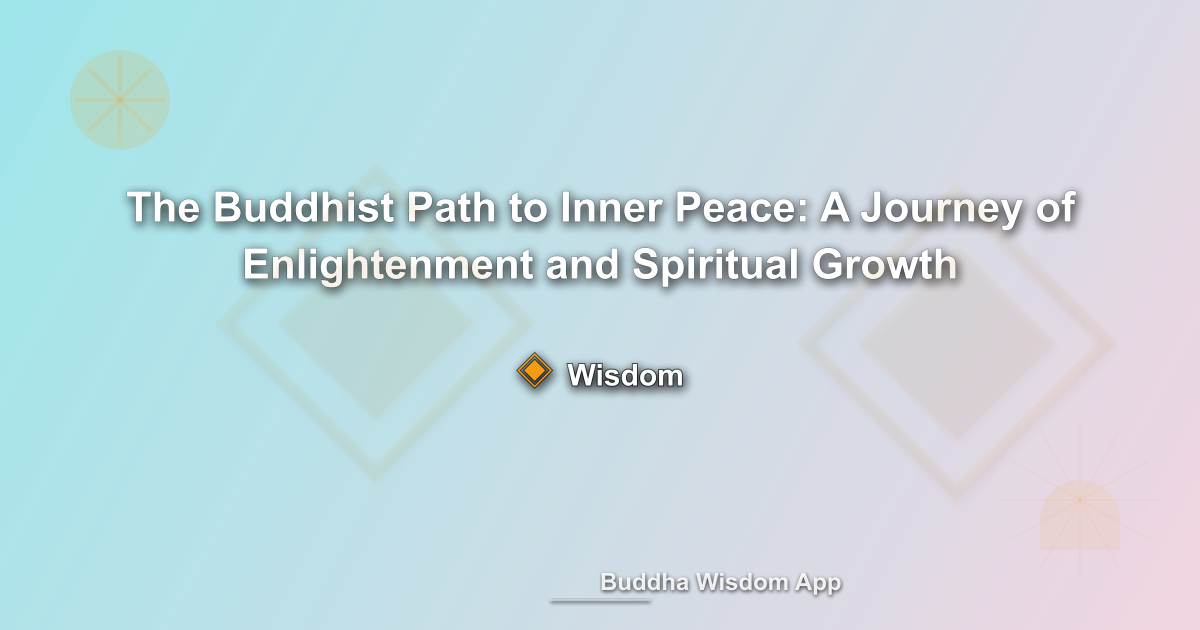The Buddhist Path to Inner Peace: A Journey of Enlightenment and Spiritual Growth

Introduction
In our fast-paced, modern world, finding inner peace can feel like a daunting task. With the wisdom of Buddhism, however, such tranquility is not only possible, but attainable in our everyday lives. This blog post will guide you down the Buddhist path towards inner peace, offering practical tools for spiritual growth and enlightenment.
The Buddhist Perspective on Inner Peace
According to Buddhism, inner peace, or 'Shanti', is a state of being in which the mind is calm and silent, free from the turbulence of thought. It is the cornerstone of Buddhist wisdom, forming the foundation for spiritual growth and enlightenment. Attaining inner peace involves understanding the nature of suffering, embracing mindfulness, and striving for enlightenment.
Understanding the Nature of Suffering
Buddhism teaches that suffering is a part of life but can be overcome. The Buddha's Four Noble Truths illuminate the nature of suffering, its causes, its cessation, and the path leading to its cessation. To find inner peace, we must first acknowledge our suffering and then strive to understand its roots, which typically reside in our desires and attachments.
Embracing Mindfulness
Mindfulness is a vital tool in the Buddhist path towards inner peace. It involves being fully present and aware of our experiences, thoughts, and feelings without judgment. By practicing mindfulness, we can cultivate a deeper understanding of ourselves and our reality, leading to increased tranquility and wisdom.
Striving for Enlightenment
The ultimate goal of Buddhism is enlightenment, or 'Nirvana'. This state of ultimate liberation and inner peace is achieved by following the Eightfold Path, a comprehensive guide to ethical living, mental discipline, and wisdom.
Practical Exercises and Tips for Inner Peace
1. Practice meditation: Spend a few minutes each day focusing on your breath, clearing your mind and cultivating mindfulness.
2. Cultivate compassion: Practice loving-kindness towards yourself and others, fostering positive emotions and peaceful relationships.
3. Follow the Eightfold Path: Incorporate the principles of right view, right intention, right speech, right action, right livelihood, right effort, right mindfulness, and right concentration into your daily life.
4. Seek wisdom: Read Buddhist texts, attend teachings, and engage in discussions to deepen your understanding of Buddhist wisdom and its application in your life.
Conclusion
Inner peace is not a destination, but a journey. By embracing Buddhist wisdom and applying its teachings in our daily lives, we can cultivate a tranquil mind and attain enlightenment. Remember, the path to inner peace is walked one step at a time. Begin your journey today.
Continue Your Buddhist Journey
Explore more Buddhist wisdom with our free app - featuring daily quotes, guided meditations, and practical teachings for modern life.
📱 Download Buddha Wisdom App
